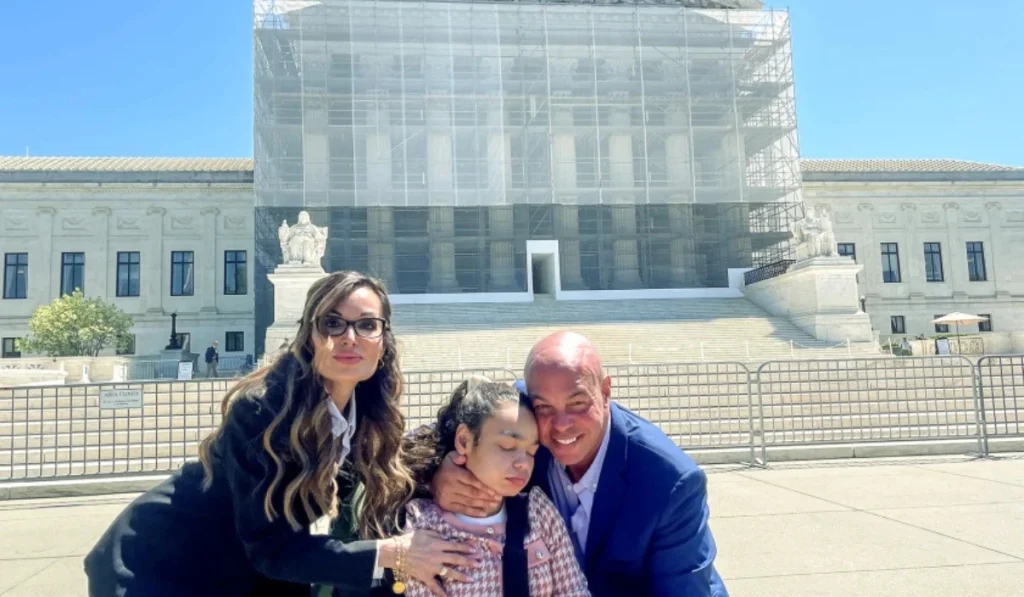On Thursday, July 24, 2025, Governor Hochul signed “Desha’s Law” (S.5539A/A.785A), a pivotal piece of legislation requiring all public schools across New York State to develop and implement comprehensive cardiac emergency response plans. This serves as a proactive step that promises to save lives and offer a much-needed layer of security within school communities.
This law, championed by Senator April Baskin and Assemblymember Michaelle Solages, is a testament to the enduring impact of a heartbreaking tragedy. Desha Sanders was just 12 years old when she collapsed while playing basketball at her school in 2009. A defibrillator was on site, but tragically, it was inaccessible, locked away when every second counted. Desha’s life, full of promise, was lost. Her cousin, Senator Baskin, has tirelessly fought to ensure no other family experiences such preventable sorrow. This legislation, named in Desha’s honor, stands as a powerful reminder that preparation, not panic, is the true pathway to saving lives.
The ripple effect of this law extends far beyond individual incidents. Sudden cardiac arrest (SCA) can strike anyone, at any age, and often without warning. While the public perception might lean towards student-athletes, a study by NYU Rory Meyers College of Nursing revealed that a significant number of cardiac arrests in New York State schools actually occur in adults – school staff, teachers, and other community members who are integral to our children’s learning environments. This underscores the critical need for a universal, accessible plan that protects everyone within school walls.
The American Heart Association (AHA), a staunch advocate for this legislation, emphasizes that prompt action is the key to survival in a cardiac emergency. Their research indicates that schools with Automated External Defibrillators (AEDs) on site see a survival rate of approximately 70% for children experiencing cardiac arrest, a staggering seven times the overall survival rate. Desha’s Law builds upon existing requirements for AEDs in schools by mandating a cohesive plan for their deployment, staff training, and integration with local emergency services. This holistic approach ensures that when a heart stops, there’s no frantic search for keys or confusion about who does what. There’s a plan, a trained team, and the immediate resources needed to act.
Think about it: every fire drill we’ve experienced, every lockdown procedure practiced – these are measures born from the understanding that preparation prevents catastrophe. A cardiac emergency is no less critical, and arguably, even more time-sensitive. The American Heart Association’s “Cardiac Emergency Response Plan (CERP) Schools Checklist” highlights essential elements for effective plans: establishing a CERP team, sharing the plan widely, regular maintenance of AEDs, ongoing staff training in CPR and AED use, conducting routine drills, and integrating with local emergency medical services. This new law in New York will ensure these vital steps are not just recommendations, but requirements.
The impact of this legislation resonates deeply, especially for communities of color where health disparities often present additional challenges. Ensuring that all schools, regardless of their zip code, are equipped and prepared to respond to cardiac emergencies is a crucial step towards health equity. It means that a child in the Bronx, or a dedicated teacher in Buffalo, has the same fighting chance as anyone else if sudden cardiac arrest strikes.
Damar Hamlin, the Buffalo Bills safety whose life was dramatically saved on the field due to immediate and well-coordinated care after a cardiac arrest, knows this truth firsthand. His powerful advocacy for heart health and emergency preparedness in schools and youth sports, following his own experience in January 2023, undoubtedly played a role in the momentum behind Desha’s Law. His statement upon the law’s signing, “To know that my experience is leading to real change — not just for people I know, but for lives I may never meet — means the world to me. This is bigger than football. We’re putting the right systems in place to save lives, and that’s a legacy I’m proud to be part of,” encapsulates the profound human impact of such legislation.
For parents, this law offers a measure of peace. Sending our children off to school, we entrust them with their safety and well-being. Knowing that there’s a clear, practiced plan in place for a cardiac emergency, and trained individuals ready to act, eases a significant burden. For educators and school staff, it provides the necessary tools and training to confidently respond to a life-threatening situation, empowering them to be true lifesavers.
Desha’s Law is about building a “Nation of Lifesavers” right within the heart of our school communities, ensuring that every beat counts.





